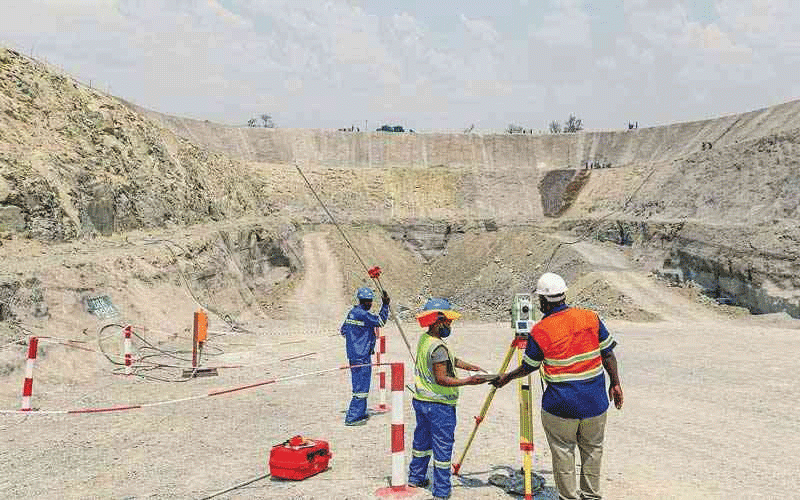
IN 2019, global foreign direct investment (FDI) flows were reported at US$1,5 trillion dollars, according to United Nations Conference on Trade and Development (UNCTAD).
The year 2020, having been a pandemic-year, had a 42% drop, with an estimated US$859 billion in world investment tides.
In the following year, there was an impressive recovery, with, around US$1 690 billion in FDI transactions.
The growth was underpinned by loose financing conditions due to lower interest rates and major stimulus packages, plus global economic resurgence from the pandemic.
According to the Organisation for Economic Co-operation and Development (0ECD), April 2023 world investment report, FDI then dipped to US$1 286 billion (nearly US$1,3 trillion) for the next year (2022).
The contraction is attributed to the war in Ukraine, persistent global inflation and a tightening of financial markets, due to high interest rates, around the world.
The brief historical context has been provided, in order to outlay the mega-size of FDI movements, occurring around some small recipient countries, who seem unaware or unable to attract a larger chunk for their own development.
FDI in 2022
- Zimbabwe is closed for business, says think tank
- New perspectives: Reconfigure Zimbabwe’s economy for recovery
- Zimbabwe is closed for business, says think tank
- New perspectives: Reconfigure Zimbabwe’s economy for recovery
Keep Reading
A look back at 2022 shows that the largest recipients of foreign direct investments in that year were the United States of America (USA), China and Brazil, in that order.
Most investments were channelled to either developed economies or emerging markets. Africa, as a whole received only US$45 billion, from the US$1,2 trillion flows.
Typically, high-income nations are the main sources of FDI. In 2022, most FDI outflows (sources), were from the OECD. To put it in the right context, approximately US$1 067 billion (over US$1 trillion) of the US$1 286 billion FDI outflows originated from the block of 38 countries (OECD).
For more clarity, the powerful investor countries of USA, Japan, Germany, United Kingdom (UK) and Australia were sources of US$403 billion, US$162 billion, US$143 billion, US$130 billion and US$120 billion, respectively.
The only significant contribution from a non-OECD member was from China, which had FDI outflows of US$150 billion for the year.
The cultural, political and economic interpretations of investors from these regions should be grasped for maximum marketing impact and sustainable relationships.
Beneficiaries of FDI
It is crucial to state that the main source countries of FDI to the rest of the world (OECD), are, at all times, the main recipients as well.
In essence, this means that there are massive, mutual and inter-country flows of investments funds (FDI) from one OECD country to another. For example, of the top 10 largest recipients of global FDI, only three are non-OECD countries.
The three are China, Brazil and Mexico. In simple terms, this means that OECD members are investing in each other's countries, more than anywhere else, in the world.
A look at the top three recipients of FDI, alongside Zimbabwe may be vital in order to observe their competences and challenges in attracting FDI, if any.
The USA was the largest recipient of FDI in 2022. A total of US$318 billion worth of investments flowed into the country, sourced mainly from Japan, Germany, Canada, UK, Ireland and France.
The country is prominent for attracting FDI for several reasons.
Firstly, its diverse labour force provides all sets of skills and competences, required by any company, on the globe; from general factory workers, to university degree holders, and highly specialised technical human capital, such as are required in advanced IT, and engineering operations. This is underpinned by the robust education sector, which stays relevant and focused on solving problems of the realities of a 21st century existence.
Secondly, there are relatively lower corporate taxes, which are also more straightforward and easier to understand before investing. For instance, the corporate tax rate is 21% in the US, which fares better, in comparison with the UK and Netherlands at 25% and 25,8%, respectively. This frees up more revenue, which can be redirected to the funding of business expansions, new business opportunities and more workforce. To add to that, the regulatory environment does not restrain the opening of new businesses or expansion of existing ones. Before the suspension of the World Bank's "Ease of doing business" report in 2021, the US generally ranked higher on the list, with its last appearance on 6th position out of 190 evaluated countries.
Thirdly, the robust consumer market with its powerful purchasing power offers lucrative profits and greater chances of business survival, compared to smaller economies. With a population of over 300 million people, and US$26 trillion GDP, it is fair to say that, it is harder for an adequately capitalised business to fail in such an environment. What is more, the USA has trade agreements with several other significant economies, which allows businesses investing there to have access to hundreds of millions of consumers. The United States-Mexico-Canada trade Agreement (USMCA) is a perfect example of what drives more foreign investment into the north-American country.
The fourth reason for the state of the attractiveness of the US is the robust infrastructure, which improves the efficiency of transporting goods, employees and consumers. This typically results in higher productivity, less risks and more profits for businesses. Additionally, the developed, resourced and highly fluid capital markets make it easier for investors to raise funds for launching, and maintaining their companies in the case that their funds become insufficient to sustain business operations. From stocks, bonds to money markets, the options for raising finance are plentiful. China was the second-largest FDI beneficiary, in 2022, receiving $187 billion. The Asian giant has focused on extensive infrastructural development in the past 30 years. This has reduced the costs of trade and improved its efficiency. In fact, China has largely outpaced other emerging market economies in this area, making it the most attractive of the group. An abundant and diverse population ensures that there is ample labour force which has the requisite skills. The huge population and GDP also provide an expansive lucrative market for businesses to bring in FDI.
Foreign investment largely targets areas in healthcare, IT and luxury goods’ markets. Moreover, the Communist Party of China has largely maintained an environment of strict law and order, which is another determinant drawing foreign firms.
Having weathered the Covid pandemic successfully, investors will place even more trust in the ability of the Chinese government to keep things under control, even in the worst of circumstances.
Much of foreign investment into the Asian economy is sourced from Hong Kong, Taiwan and Chinese investments, which are registered outside of the mainland.
Brazil was the third-largest recipient, drawing a massive US$90,6 billion in 2022. However, the figure is more nuanced, as it comprises US$37 billion in new capital, US$33 billion in reinvested profits and US$21 billion in inter-company loans.
The main investors are USA, Canada, France and the Netherlands. The main areas of FDI, include natural gas, minerals, chemicals (including pharmaceuticals), commerce (including franchises), financial and auxiliary services, and motor vehicle manufacturing.
The large population of over 200 million provides a massive market for businesses interested in establishing a presence in the retail sector. The diversified economy, which relies on several sectors, such as agriculture, commerce, and manufacturing, ensures that the nation is more resilient and less impervious to global economic shocks.
This particularly attracts investment in the retail and domestic consumption sector.
More importantly, the country’s geographical location, provides access to South, Central and North America. Nevertheless, there are still encumbrances, which, if removed, will propel the nation to solidify its position as an FDI destination of choice, into the future.
Hindrances, include complex regulatory taxes and bureaucracy, which delay and cost businesses.
Shortage of easily accessible skilled personnel and insufficient infrastructural development, compared to advanced and other emerging market economies, still adds to the cost and complexity of doing business.
Increased inflationary pressures and political uncertainty also present risks, which can potentially reverse the past gains in FDI growth, going forward.
In Zimbabwe, the investment agency, Zimbabwe Investment and Development Agency (Zida) reports that FDI in 2022 was US$2,3 billion, whilst UNCTAD maintains that the figure is much lower at US$352 million.
China is the largest investor in the country, with a reported US$1,3 billion dispensed in 2022, according to Zida’s chief investment officer, Silibaziso Chizwina.
Foreign capital is mainly being assigned to the mining, manufacturing and services sectors. Some notable investments include the US$1 billion Dinson Iron & Steel Company project and over US$600 million assigned by three Chinese firms in the development of lithium mines.
There remains capacity to absorb more investments in electricity transmission, roads, rail network, healthcare, textile and agro-production, which is reported to be operating at only 45% of ideal output.
The growth of domestic wheat production, new economic activity and shortage of energy in the Southern African Power Pool, juxtaposed against abundant coal and hydro resources, make a good case for attracting big capital for energy generation.
There remains room for improving the business environment, as efficiency in handling permits and other applications, plus policy consistency on the part of government, are prerequisites for FDI growth.
Political stability, which also encompasses the civil coexistence between the opposition and ruling political parties, is imperative in the drive to attract foreign capital.
Above that, achieving robust economic growth can lead to higher domestic incomes (purchasing power), which will attract investments in the retail sector.
In closing, the place that Zimbabwe holds in the global FDI matrix, reveals the need for the government and local agencies to raise the stakes and improve their ambition.
Going forward
It is also reasonable to expect global investment flows to decrease and lose some momentum, owing to geopolitical risks, such as the war in Ukraine and high interest rates.
However, as important as FDI is touted to be, it is imperative to understand that over-reliance on it can be detrimental. This is because, mostly after a few years, foreign capital begins to draw its earnings to source countries.
This can compromise the host country’s income equality, sovereignty and vulnerability to external shocks.
Instead, diversity of the demand side of the economy is encouraged, such that, government spending, exports and domestic consumption are equally robust.
That is a more sustainable way of creating wealth and improving quality of life for the locals.
Ultimately, FDI should be leveraged to create domestic wealth, which will sustainably grow more indigenous entrepreneurs.
The more that it is put to good use, the more that it will also attract Zimbabwean diaspora skills and capital.
- Tutani is a political economy analyst. — [email protected]






